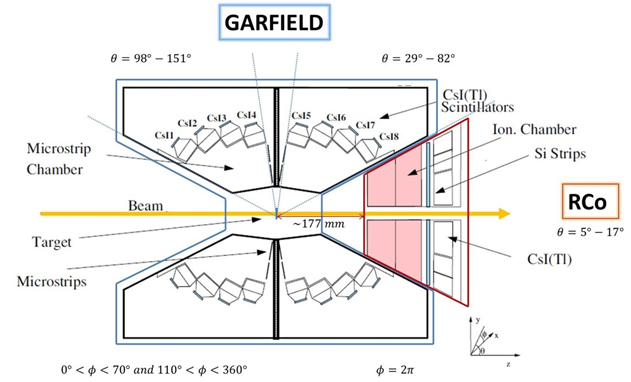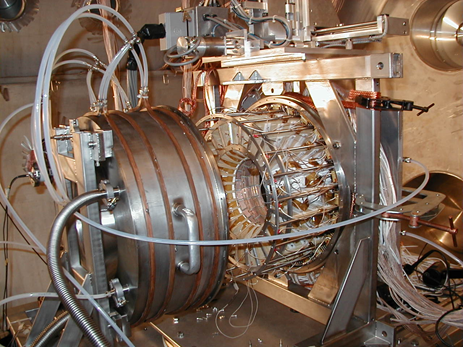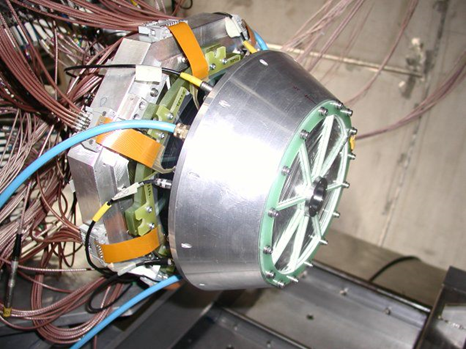[ M. Bruno et al., “GARFIELD + RCo digital upgrade: A modern set-up for mass and charge identification of heavy-ion reaction products”, EPJ A 49 (2013) 128; https://link.springer.com/article/10.1140/epja/i2013-13128-2 ]

Figure 1: Layout of the GARFIELD + RCo array.
The GARFIELD (a General ARray for Fragment Identification and for Emitted Light particles in Dissipative collisions) array is a multi-detector based on the DE-E technique for fragment and light charged particle identification. It was installed permanently at LNL in the 1990s to study complex nuclear events produced in the medium-low energy range (5-20 MeV/u) heavy ions induced reaction. Since 2010, it was coupled with the ancillary Ring Counter (RCo) placed at forward angles (5°-17°). They are fully equipped with digital electronics. The whole apparatus has 488 detecting cells with a geometrical coverage of the order of 80% of 4π.

Figure 2: The GARFIELD forward chamber.
GARFIELD has a cylindrical symmetry, covers the polar angles θ=30°−150° and consists of two drift chambers, placed back-to-back and filled with flowing CF4 gas at a pressure of 50 mbar. Each chamber is divided in sectors covering 7° in the azimuthal angle; moreover, in each sector four polar angle regions are defined by four CsI(Tl) scintillators, each of which covers 14°. For both chambers the DE−E technique allows charge identification of particles and fragments. Light particles (up to Z=3) are identified in both charge and mass through the fast vs. slow pulse shape analysis (PSA) technique of the CsI(Tl) signals. The energies of particles and fragments are determined with an accuracy of the order of few percent with a 0.8÷1 MeV/u threshold.

Figure 3: The RCo ancillary detector.
The Ring Counter (RCo) is an annular three-stage telescope with a truncated cone shape, designed to be centered at 0° with respect to the beam. It consists of an ionization chamber (IC), filled with CF4 gas at a pressure of 25 mbar and divided in eight azimuthal sectors, each one followed by an eight strip 300 μm thick silicon detector (Si) and 6 CsI(Tl) scintillators. This allows for an angular resolution of about 1.4 for the polar angle and 22 for the azimuthal one. The particle and fragment identification is obtained through DE−E technique in IC−Si or Si−CsI(Tl) and/or with PSA technique of the silicon strip and of CsI(Tl) scintillator fast-slow signals.